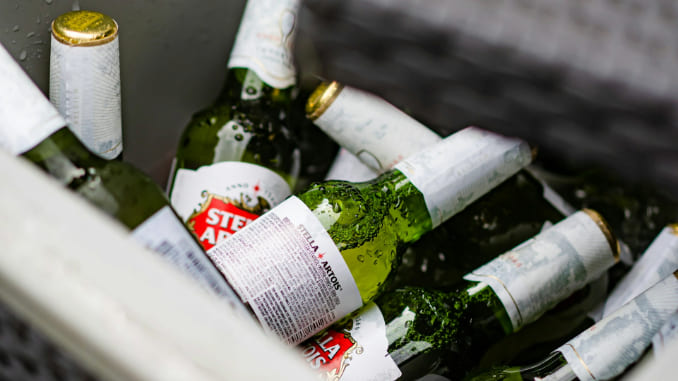Ranking and Reviewing Europe’s Most Popular Macro Lagers
Photo by Marek Mucha/Unsplash
Prior to the craft beer explosion in the United States, most beer menus were broken into two categories: import or domestic. In most cases, the imported beers were macro-lagers from Mexico or Europe. With America’s beer scene still hamstrung by Prohibition-era policies, there was a safe assumption that a foreign option equated to a higher quality, especially in the case of European breweries, many of which had been brewing since before the United States existed.
Decades later, great beer has never been easier to find. Even most dive bars are embracing some craft options. This leaves the European macro lager in a liminal space for many American drinkers. They’re too eccentric for the undiscerning bar patron but too bland for the American craft beer lover. This begs the question: How good are they, really? And which are the best (and worst)?
For this list, I sought out one macro lager from each European country that I could source from. Whenever possible, I used the most-consumed beer from each country. For all selections, quantity comes before quality. None of these beers (with one possible exception) are the best that any of these countries have to offer, but they are what they sell the most of.
14. Denmark
Carlsberg Group — Carlsberg
Pilsner, 5%
Most European lagers are packaged in green bottles. Because green glass filters out fewer UV rays than brown glass, beers packaged in these bottles are more likely to become “lightstruck,” a process by which light gives beer a dank, “skunky” aroma. In the case of Carlsberg, opening the bottle was all it took to make the room reek of what we all suspect the Mystery Machine must have smelled like. The beer itself is light and pale in color. It’s light in flavor as well, leading to that skunk being one of the primary flavors, followed by a light grain sweetness. It’s crushable but not quite crisp.
13. Italy
Peroni — Nastro Azzuro
Pale Lager, 5.1%
In a country known for wine, Peroni is Italy’s most popular beer, edging out Birra Moretti. It’s also a victim of green bottle syndrome. In this case, the skunk was still present, though not quite as pronounced as in Carlsberg. Peroni is also very light in flavor. It has a sweet body, but in this case, corn is the most prominent grain. While several other beers on this list also incorporate corn to some degree, this was the only one that had a prominent “corny” note. While that made the beer sweeter, it took away from the crisp edge most seek in a pale lager.
12. Holland
Heineken — Heineken
Pale Lager, 5%
Behind Ab InBev, Heineken is the second-largest producer of beer in the world. Of all the beers on this list, this one may be the best (worst?) example of quantity over quality. It’s by far the most widely recognized brand among European lagers, perhaps because of its branding as a premium export or perhaps because of the brand’s aggressive sports marketing campaigns. As for the product, it’s skunked, and the lightness and the sweetness of the beer are at odds with each other, making it less than refreshing.
11. France
Kronenbourg — 1664
Pale Lager, 5.5%
While there may be more to French brewing culture than most would expect, as far as mass production goes, French wine quality far exceeds the quality of French beer. Kronenbourg is the default macro lager in France, and there’s not much to write home about. If anything, this beer’s most distinguishing feature is what it lacks. It’s less skunky than most of the other green-bottled beers and is relatively clean drinking. While not quite crisp, it has a cleaner finish than the other beers mentioned so far.
10. Portugal
Super Bock Group — Super Bock
Pale Lager, 5.2%
Don’t be fooled. This beer is neither a bock, nor is it super. To be fair, as a European macro lager, it doesn’t need to be. As one of the few beers on this list to be packaged in a brown bottle, it’s thankfully devoid of any lightstruck notes. The beer itself is slightly more malty than the options that come before it on this list, but overall, it doesn’t have much of a prominent flavor or lingering aftertaste. While this helps with crushability, it’s ultimately less refreshing than the other options here.
-

-

-

-

-

-

-

-

-

-

-

-

-

-

-

-

-

-

-

-

-

-

-

-

-

-

-

-

-

-

-

-

-

-

-

-

-

-

-

-








































